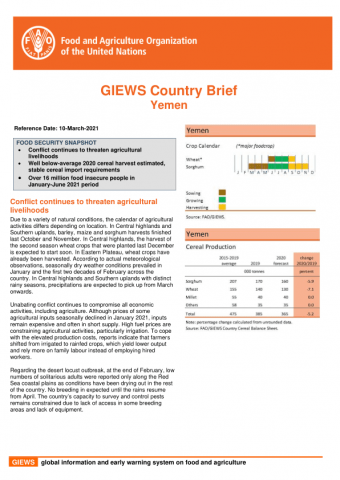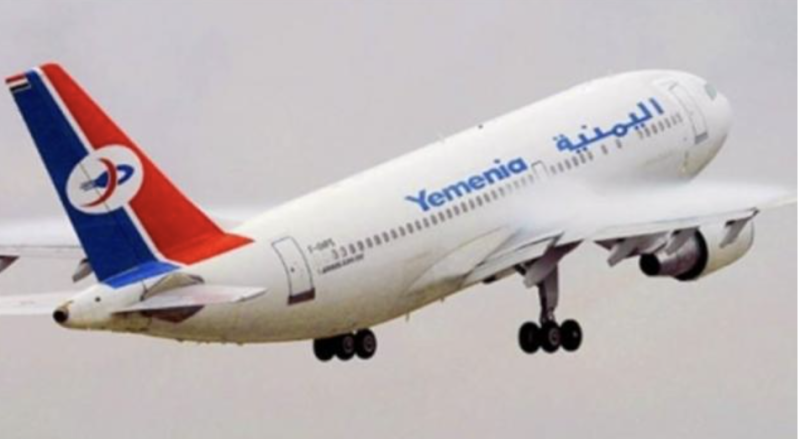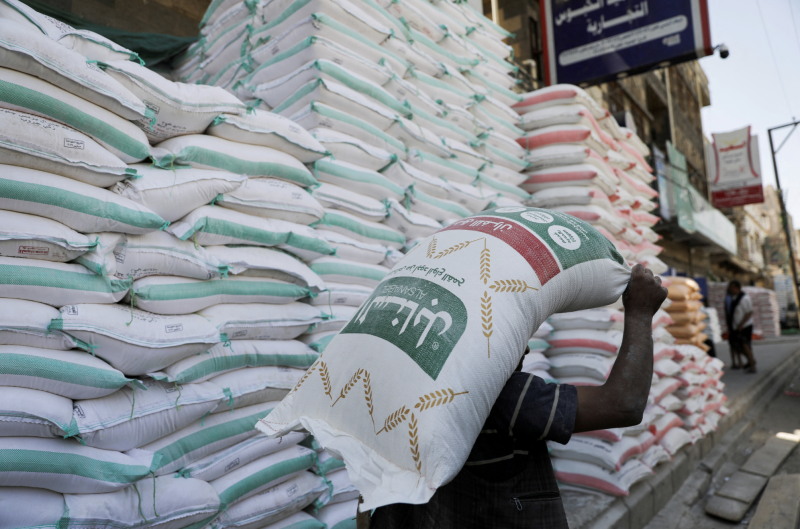Yemen: Food supply chain - Thematic report, 16 December 2020


EXECUTIVE SUMMARY
Yemen’s food supply chain has continued to function through five years of conflict, in large part because food importers on all sides have adopted dynamic operational methods in a complex and politicised environment. This has come at a cost, however. Food prices doubled between 2015 and 2019, and continue to rise. The number of employed Yemenis has halved over the same period.
According to international experts, food security in Yemen continues to deteriorate and two-thirds of Yemenis are in need of food and livelihood support.2 Without sustained and informed external support, the gap between the cost of food and what Yemenis can afford will steadily grow.
This report draws on key informant interviews and a survey of 218 food actors in the south and east of Yemen to examine the following questions:
• What are the key cost drivers of food prices?
• How are actors along the food supply chain adapting to these pressures?
• What can the international community do to relieve pressure on food prices?
Exchange rate instability and challenges accessing credit are the largest cost drivers of food prices (Section 2) according to Yemeni traders and experts. The increase in food prices since 2015 is primarily a result of the drop in the value of the Yemeni riyal. Yemen is uniquely reliant on imports (for 88% of its food supply), making it highly exposed to currency fluctuations. The three main sources of food import financing and currency stability – remittances, the Saudi-funded letters of credit, and foreign aid (which accounts for 20% of wheat imports according to ACAPS estimates) – are all declining. Efforts to address the rise in food prices will likely be meaningless unless a course of action is adopted that results in stabilising the riyal or supporting incomes that keep pace with inflation.
Competition to control import financing by both parties to the conflict also adds to the cost of food. Competing letters of credit systems, divergent monetary policy, and attempts to control fuel supply chains all add to the complexity of food supply chains. Higher operating costs are passed on to consumers as higher prices (Section 3).

Aden — Yemen Airways has announced new updates to its ticket cancellation (VOID) policy, introducing financial penalties on travel agents in…

Geneva – The United States announced that Yemen will not be among the countries benefiting from a new $2 billion funding pledge for United Na…

Paris — The French humanitarian organization Acted announced that it has delivered cash assistance to nearly 89,000 people affected by displa…